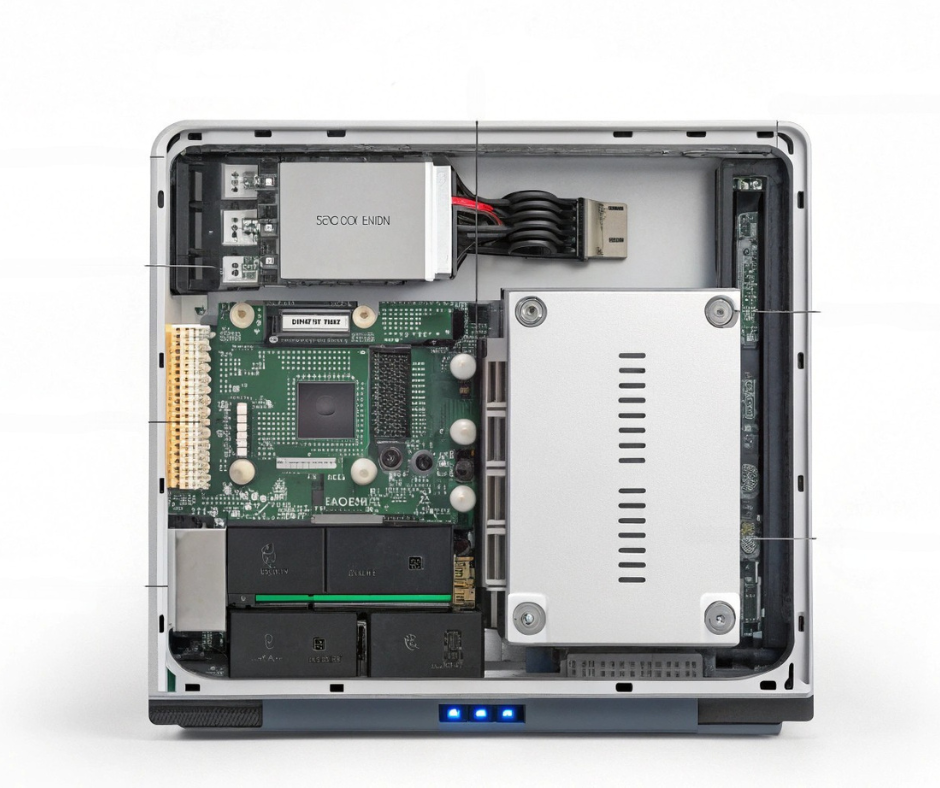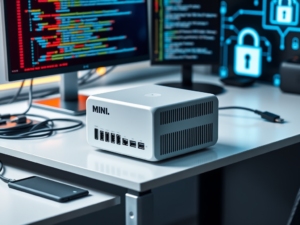Introduction
Building upon the foundation laid in Module 1, where we explored the purpose and benefits of establishing a personal cybersecurity lab, delved into ethical hacking and penetration testing, and introduced mini PCs for your cybersecurity lab environments, we now turn our attention to selecting the right mini PC for your cybersecurity lab. This module will guide you through understanding the essential hardware specifications, evaluating popular mini PC models, and making informed decisions to ensure your lab meets your cybersecurity training needs effectively.
This article contains affiliate links. As an Amazon Affiliate, I might make a small commission on every sale. No extra charge to you and it helps to support this blog.
Understanding Hardware Specifications for Mini PCs

Selecting a mini PC for your cybersecurity lab requires a thorough understanding of hardware components and their impact on performance. Key factors to consider include the processor (CPU), memory (RAM), storage options, and network connectivity.
The CPU serves as the brain of your mini PC, dictating its ability to handle multiple virtual machines (VMs) and complex computations. Opt for a multi-core processor with virtualization support to ensure smooth operation. Intel’s Core series and AMD’s Ryzen processors are popular choices that balance performance and power efficiency.
RAM is critical for multitasking and running multiple VMs simultaneously. While 8GB of RAM is the minimum requirement, aiming for 16GB or more is advisable to accommodate the demands of various cybersecurity tools and scenarios. Adequate RAM ensures that your system remains responsive and capable of handling intensive tasks without bottlenecks.
Storage solutions impact the speed and capacity of your lab environment. Solid-state drives (SSDs) offer faster data access times compared to traditional hard disk drives (HDDs), enhancing the overall responsiveness of your system. A minimum of 256GB SSD is recommended, with larger capacities preferred if you plan to store extensive datasets or multiple VM images.
Network connectivity is essential for simulating real-world scenarios and accessing online resources. Ensure that the mini PC includes reliable Ethernet and Wi-Fi capabilities to facilitate seamless communication between your lab environment and external networks.
Evaluating Popular Mini PC Models for Cybersecurity Labs
With a clear understanding of the necessary hardware specifications, evaluating specific models of mini PC for your cybersecurity lab becomes a more straightforward task. We have researched and chosen several models stand out for their performance, reliability, and suitability for cybersecurity labs.
The models range from a low end mini with 16 GB RAM to more powerful ones with as much as 32 GB RAM. But honestly, this one will get you started. I put it together with a Kali Linux VM and two small vulnerable VMs. You really don’t need a powerful machine to start with, but you’ll have more flexibility if you do.
- 𝐅𝐚𝐬𝐭𝐞𝐫 𝐑𝐮𝐧𝐧𝐢𝐧𝐠 𝐒𝐩𝐞𝐞𝐝 - BMAX mini computer B1 Pro is powered by the latest Celeron N4000 processor, Pre-installed OS, base frequency 1.1 GHz, up to...
- 𝐔𝐩𝐠𝐫𝐚𝐝𝐞 𝐌𝐢𝐧𝐢 𝐃𝐞𝐬𝐤𝐭𝐨𝐩 𝐏𝐂 - The mini pc has a slimmer and lighter body - size only 4.7x4.7x0.9 in, weight only 8.5 ounces. You can easily...
- 𝐖𝐈𝐅𝐈+𝐌𝐮𝐥𝐭𝐢𝐩𝐥𝐞 𝐂𝐨𝐧𝐧𝐞𝐜𝐭𝐢𝐨𝐧𝐬 - There are 2 x USB 3.0 ports, 2 x USB 2.0 ports, 1 x HDMI port and 1 x VGA port to support 4K dual...
When selecting a mini PC for your cybersecurity lab, consider factors such as upgradability, port availability, and compatibility with virtualization software. Reading user reviews and consulting with the cybersecurity community can provide additional insights into the performance and reliability of specific models.
Making an Informed Decision for Your Lab Setup
Choosing the right mini PC involves balancing your current needs with potential future requirements. Assess the complexity of the cybersecurity scenarios you intend to simulate and select a mini PC that can handle these tasks efficiently. Investing in a slightly more powerful system than currently necessary can provide longevity and accommodate more advanced exercises as your skills develop.
Budget considerations are also crucial. While it’s tempting to opt for the most affordable option, ensure that the mini PC you choose doesn’t compromise on essential features and performance. Remember that additional expenses may arise from necessary upgrades or peripherals, so factor these into your overall budget.
Finally, consider the support and warranty options provided by the manufacturer. A reliable warranty and accessible customer support can be invaluable in addressing any issues that may arise, ensuring that your lab remains operational and effective for your cybersecurity training endeavors.
Frequently Asked Questions
What is the minimum RAM requirement for a mini PC in a cybersecurity lab?
A minimum of 8GB of RAM is recommended, though 16GB or more is preferable for running multiple virtual machines and resource-intensive applications smoothly.
Why is CPU virtualization support important in a mini PC?
CPU virtualization support enables the mini PC to efficiently run virtual machines, which are essential for simulating different systems and networks in a cybersecurity lab.
Are SSDs necessary for a cybersecurity lab setup?
While not strictly necessary, SSDs significantly enhance system responsiveness and reduce load times, providing a more efficient and effective lab environment.
Can I upgrade the components of a mini PC later?
Upgradability varies by model. Some mini PCs allow for RAM and storage upgrades, while others have fixed components. It’s advisable to choose a model with upgrade options to extend its usability.
Is a mini PC sufficient for advanced cybersecurity training?
Yes, a well-chosen mini PC with appropriate specifications can effectively support advanced cybersecurity training, including running multiple virtual machines and complex simulations.
Conclusion
In this module, we’ve explored the critical considerations involved in selecting a mini PC for your cybersecurity lab. By understanding hardware specifications, evaluating popular models, and making informed decisions, you are now equipped to choose a mini PC that aligns with your training objectives and budget. In the next module, we will delve into preparing your mini PC environment, including installing the operating system and configuring essential settings to create a robust foundation for your cybersecurity lab.

I am a retired software engineer with experience in a multitude of areas including managing AWS and VMWare development environments. I bought a relative a mini-PC a year ago and have become passionate about the technology and its potential to change how we deploy software.


